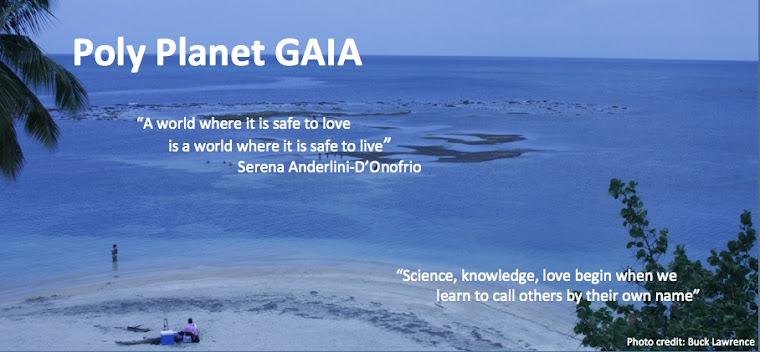Bi ReConNaissance: Introduction to BiReCon
Cluster 3. Bisexuality Through the Lifespan
Serena Anderlini-D'Onofrio
While the effects of biphobia rage in many quarters, the discourse of bisexuality has expanded in others, including the meaningfulness of bisexuality through the human lifespan. This is the focus of the third cluster.
 |
| Jones's Study: Bis Imaging Future |
“Imagining Bisexual Futures” organizes data from past BiCon surveys and a workshop on aging at BiReCon 2010 called “When I Get Old” to explore how bisexual people imagine and wish to organize our late life. Rebecca Jones, a Lecturer at the Open University in Buckinghamshire, proposes an ethnomethodological perspective to examine normativity as defined within a given subculture in its interfaces with scripts and expectations that evolve in mainstream culture. In her view, in these subcultures, we observe a forging and re-forging of normativites that are in flux. Her research implies the trust that imagining non-normative futures in a workshop can help to actualize them. Being on the verge of designing the next chapter of my own life, I found this workshop very inspiring. How can bis design chapters in our lives that reflect the way we want to be? Can ‘normativity’ be redesigned to accommodate bisexual people’s dream late-life? Or will old bis get to be ‘normalized’ and pushed back into the closet by assisted living and the medicalization of late-life? Could old-age be the time when we bis get to finally fulfill our inclusive amorous fantasies? Jones’ research maps these possibilities, since the imagination is where it all begins!
 |
| Jones's Study" Bis Imagining Future |
In “There Has Been No Phase in My Life When I Wasn’t Somehow Bisexual,” Finnish anthropologist Jenny Kangasvuo provides some concrete examples of how the meaning of bisexuality can evolve in one’s life. In 1999, Kangasvuo’s interviews with 40 bisexual-identified Finnish people opened her career. Now she revisits a number of her subjects with follow-up questions designed to understand “what kind of meaning does the concept of bisexuality have in their lives” (7). Informants evolved along different paths: Some had children, some formed a family with a same-gender partner, some with an other-gender partner, some married and divorced under the new Finnish laws for marriage equality. Bisexuality remained significant in organizing meaning in their lives.
 |
| Jones' s Study: Bis Imagining Future |
Copyright and Prepublication Notice:
© Serena Anderlini-D'Onofrio, transferred to Taylor & Francis for upcoming publication in BiReCon, a selected proceedings issue of the Journal of Bisexuality. Prepublished here courtesy of T & F. Stay tuned for volume and buy it online!
Read the Journal of Bisexuality online, the only peer-reviewed journal dedicated to the study of all aspects on bisexuality. Check out our latest: a provocative special-topics issue on Bisexuality and Queer Theory!





















